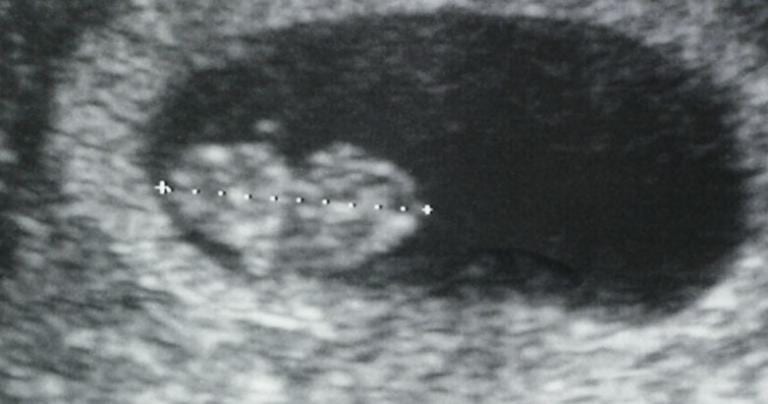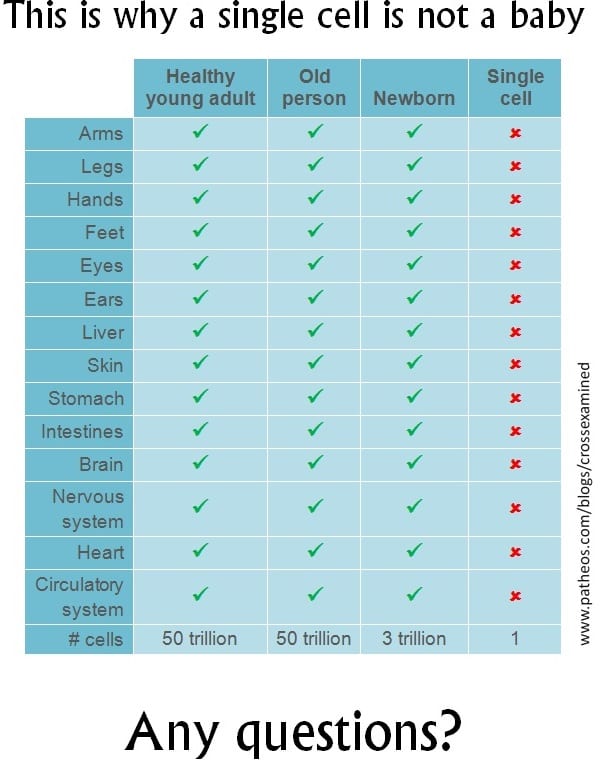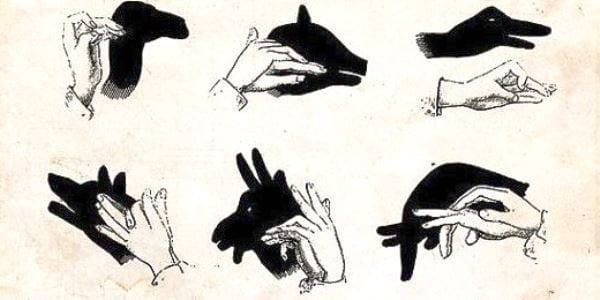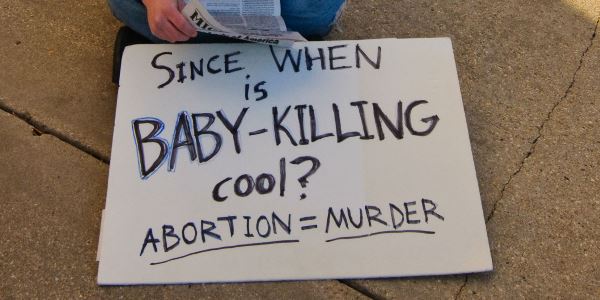
The U.S. election is two weeks away. Let’s talk about the biggest issue in the minds of Trump’s supporters, abortion.
I want to expose six fundamental flaws that underlie the pro-life position. I think I have solutions, and next time I will outline them. My goal (perhaps surprisingly) isn’t to tell pro-life advocates that they’re idiots but to expose the errors and show them how to fix them. In this post, let’s look at the problems.
(Going forward, I will use “you” to refer to an imaginary pro-life advocate.)
Problem 1: Abstinence doesn’t work as birth control
Congress has put billions into abstinence-only sex education. That money peaked during the Bush administration, was largely redirected to other sex ed programs during the Obama administration, and has increased again during the Trump administration. As one example, the Texas state board of education recently doubled down on abstinence as the focus of sex ed.
But these programs don’t work. Toward the end of the Bush administration, a study was done to evaluate the results of these programs. Out of 700 federally funded abstinence-only sex education programs, “[four] were handpicked to show positive results and they still failed”! There was no increase in sexual abstinence, no increase in the age of sexual debut, and no decrease in the number of partners.
We can analyze this another way. Look at the 2018 list of states ranked by teen birth rate. Take the top 10 worst states and compare them against the top 10 reddest states (ranked by the percentage that voted for Trump in 2016). Six are on both lists: Arkansas, Kentucky, Oklahoma, West Virginia, Tennessee, and Alabama.
Now do the opposite comparison: match the 10 lowest teen birth rate states with the top 10 bluest states (ranked by the percentage voting for Clinton). Again, six are on both lists: Massachusetts, Connecticut, Vermont, New Jersey, Rhode Island, and New York. None of the worst-birth-rate states are on the blue list, and none of the best-birth-rate states are on the red list. Whatever conservative states are doing, it’s not working well.
Now consider abstinence teaching in schools. While it’s hard to make a quantitative comparison, bluer states are (in general) likelier to cover abstinence, cover contraception, and take a positive view of sexual orientation. Redder states are likelier to stress (rather than merely cover) abstinence and emphasize that sex is reserved for marriage. They are less likely to cover contraception or take a positive view of sexual orientation (source).
But isn’t abstinence 100% effective?
I’ve talked with conservatives who shake their heads at my ignorance and inform me that abstinence, by definition, eliminates the need for abortion. Abstinence means no sex, no sex means no pregnancy, and no pregnancy means no abortion—QED.
But it obviously doesn’t work like that in the real world. The effectiveness of contraception is measured in two different situations, perfect use and typical use. Perfect use is how it is used during a clinical trial, where every step is done correctly. Typical use is how it is used by ordinary consumers, and these consumers can misunderstand or misread directions, not bother with or forget to take a daily pill, ignore cautions, and so on. So, yes, the perfect use of abstinence gives perfect results, but as we’ve seen above, typical use of abstinence doesn’t give great results.
Abstinence “always works” in the way that dieting always works. If your last weight-loss diet or fitness commitment didn’t work, then you probably have first-hand experience with typical use not matching the expectation of perfect use. It’s like saying “Don’t get shot!” to someone off to war or “Just stop smoking!” to someone trying to quit—not really useful advice since you’re confusing typical use with perfect use.
Abstinence isn’t even a birth control method. To see this, imagine you plan to do some outdoor chores and ask someone for a recommendation for sunscreen. Their response: just stay inside.
It’s true that if you stay inside you won’t get too much sun, but that ignores your goal of doing chores. “Stay inside” isn’t a kind of sunscreen. (h/t Love, Joy, Feminism)
An analogous example is that you want to take a long trip, and you ask for advice on whether it’d be safer to go by plane, train, or car. The response: the safest option is to stay home. That’s true, but it ignores your goal of making the trip.
The choice of birth control method asks, assuming I will be sexually active, what is the best method to avoid STDs and pregnancy? “Just don’t have sex” doesn’t answer the question.
Problem 2: You focus on the symptom, not the problem
Abortion isn’t the problem; abortion is the symptom. No one would have abortions without the problem of an unwanted pregnancy.
No one enjoys getting an abortion. It’s an unpleasant medical procedure with some risk. About this we’re all on the same page, which brings us to the next problem.
Problem 3: You’re working against pro-choice community
You might think “So what? Why would I want to work with my enemy?” but you’d obviously be more effective if you could work with them rather than against them, given the stalemate we have today.
The pro-life movement wants no abortions and the pro-choice movement wants to keep them as an option, but there is common ground. Both would like to see fewer unwanted pregnancies. An unwanted pregnancy prevented is far cheaper, safer, and easier than one treated with an abortion. Fewer unwanted pregnancies mean less demand for abortions (which makes pro-life advocates happy), and that means less pressure to restrict abortions (which makes pro-choice advocates happy).
The pro-life movement’s focus on the wrong thing—the symptom of abortion rather than the problem of unwanted pregnancy—is so flawed that it looks deliberate. It’s like someone wants there to be conflict, to prevent people coming together and making progress on the real problem.
(More on who that might be in the next post.)
Problem 4: Children will become sexually mature, whether you like it or not
Christian pundit James Dobson said about the recent decision by the Texas state board of education to focus sex ed on abstinence:
Activists groups like Planned Parenthood and its morally bankrupt allies were salivating at the chance to eliminate abstinence-based teaching once and for all and replace it with a not-suitable-for-children indoctrination program. If they got their way, 11 and 12-year-olds would spend classroom time learning about gender identity, condom use and other highly sexualized topics.
By “11 and 12-year-olds,” I assume you mean “children who are about to become sexually mature.” Yes, they need to understand how their bodies will soon work.
Imagine a world where every teenager got a car, and you couldn’t prevent that. They would be eager to drive their cars, and all you as a parent could do would be to put up constraints and educate them so that when they left your house as adults, they would be responsible drivers.
Wouldn’t you want them to get driver’s ed?
In our world, people are getting married later and sexually maturing sooner. In the U.S., women are marrying on average at age 27 and men at age 29. Onset of puberty is now 10–11 for girls and a year later for boys (about five years earlier than it was in the 1800s). The process is complete about five years later.
That’s a given, and your only option is how to respond. “Wait until marriage” won’t work for everyone. It’s particularly naive given the many years typically between sexual maturity and marriage. Wouldn’t you want them to get driver’s ed?
Problem 5: Making abortion illegal doesn’t prevent abortions
Remember Kermit Gosnell? He ran a filthy abortion clinic in Philadelphia that focused on illegal late-term abortions and was sentenced to life in prison in 2011. Though they may not realize it, this is pro-life advocates’ goal. When safe, legal abortion is unavailable or inconvenient, it will be performed in unsafe, illegal clinics. One of Gosnell’s patients said about the closest Planned Parenthood clinic, “The picketers out there, they just scared me half to death.”
We’re seeing the beginnings of this today. A recent study of the restrictive climate in Texas, where more than half of abortion clinics have closed, has found that seven percent of patients seeking abortion tried to end the pregnancy on their own rather than jump the obstacles to get to a clinic. That’s more than three times the national average. The restrictions in Texas have also made late-term abortions increase.
Reliable data about the abortion rate before the 1973 Roe v. Wade decision made abortion legal nationwide is hard to find, but it appears that about 800,000 abortions were performed per year. That’s roughly the rate today. With our substantially higher population, that means the abortion rate was higher before Roe.
We find the same thing in other countries. Abortion rates are highest in countries where the procedure is illegal. No, making abortion illegal won’t make it end.
Problem 6: Obstacles erected for abortion clinics won’t work against medication abortions
Nuisance regulations like demanding that clinics have wide corridors or that their doctors have hospital admitting privileges (as Texas has imposed) will become less relevant. Medication abortions are abortions done by pills rather than an operation, and the U.S. Food and Drug Administration approved this treatment twenty years ago. For abortions up to ten weeks’ gestation, the majority are done this way in the U.S., and that fraction is increasing.
Regulations about corridor width won’t matter if the abortion can come through the mail. Prescription drugs already come into the U.S. illegally from countries with cheaper prices. The tighter the controls on bricks-and-mortar clinics, the more demand for safe medication abortions will increase.
Let’s find solutions to these problems and find ways to make the pro-life movement effective. Continue with: Most U.S. Abortions are Due to Pro-Life Movement
“Explain to me how making abortion illegal
wouldn’t lower abortion rates.”
Explain to me how making drugs illegal
didn’t lower drug use rates.
— commenter adam
.
Image from Ragesoss (license CC-BY-SA-3.0,2.5,2.0,1.0)
.




















